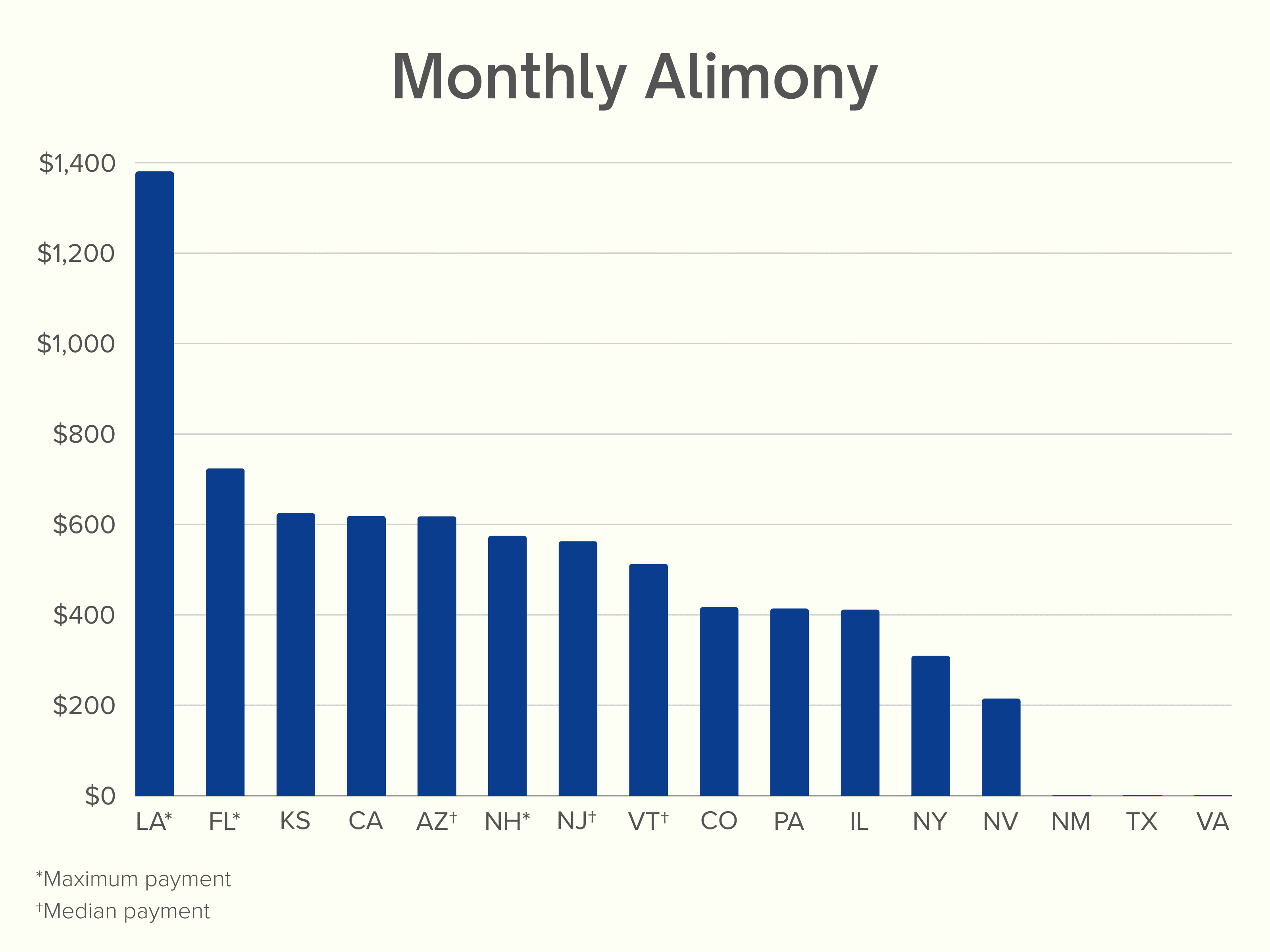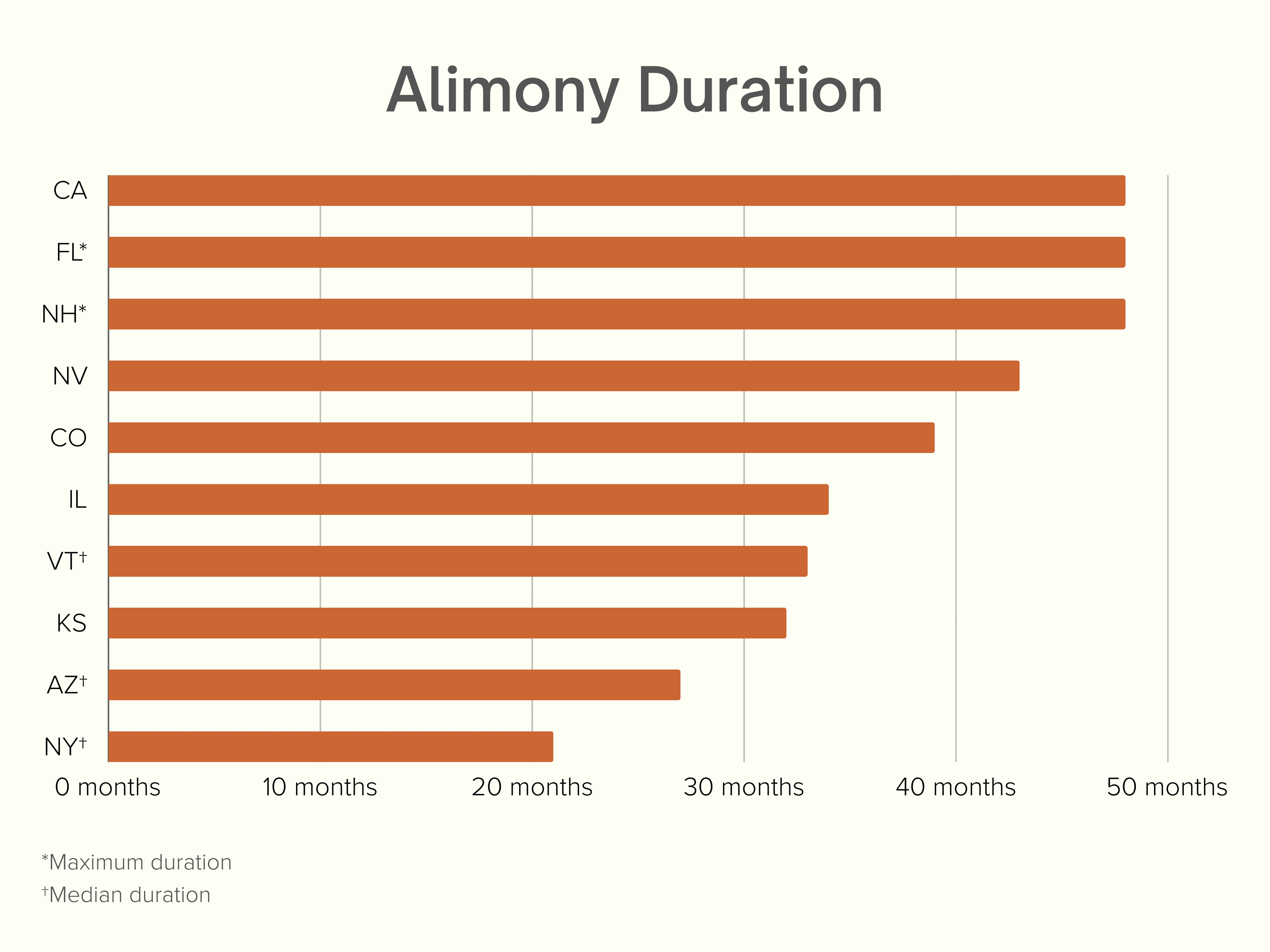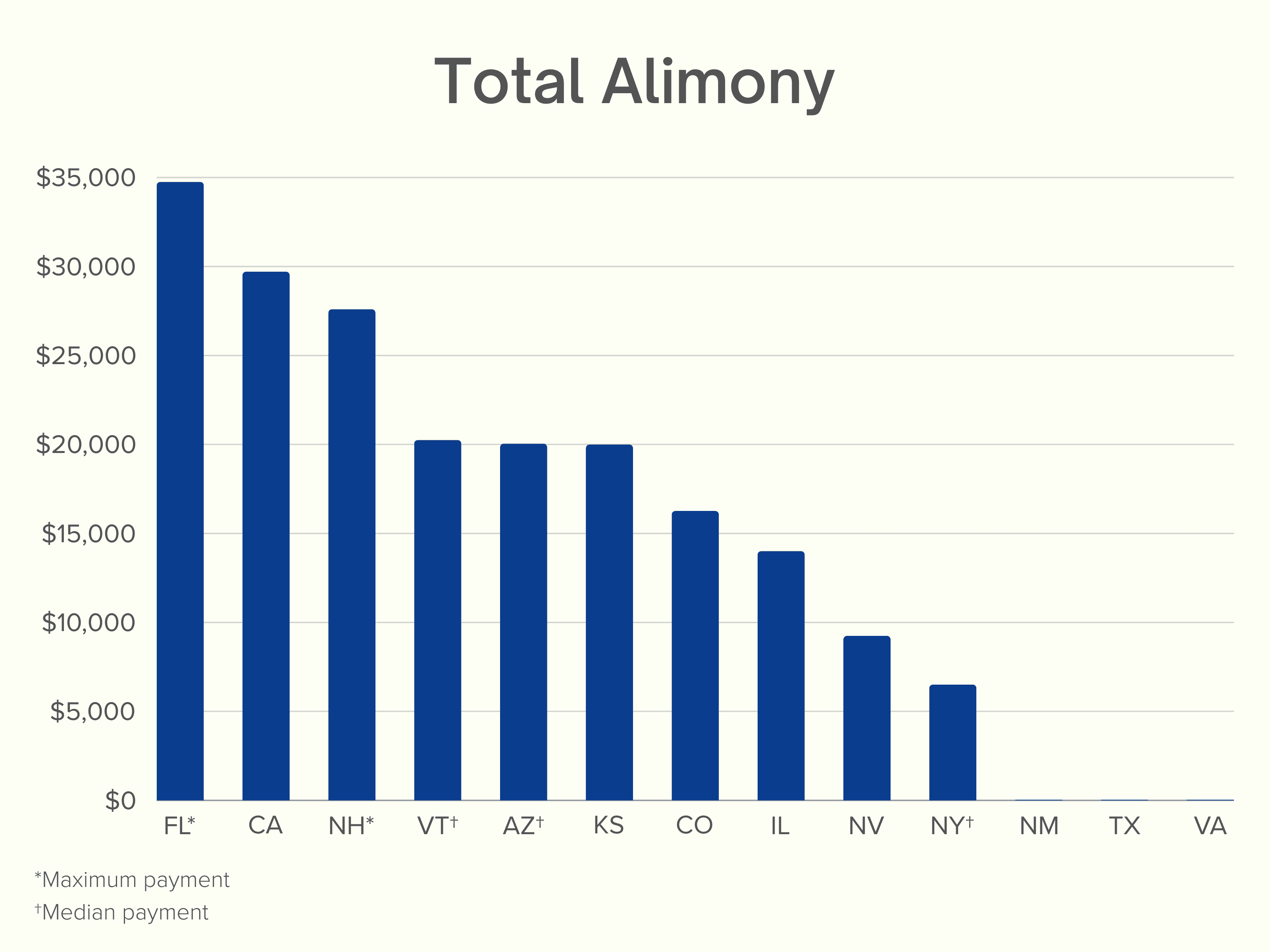
US Alimony Can Vary Over $1K a Month from State to State
If you’re a typical divorcing woman in the U.S., you might get up to $1,381 a month in alimony, or you might get nothing at all. It all depends on your state, according to a new study conducted by Custody X Change.
In fact, in 34 states, you don’t even have a formula to predict how much a judge might order you to receive or pay. That leaves you with little guidance on where to start negotiations or how much to ask a judge for.
We’re obviously in need of more consistent alimony laws in the United States. New laws would help ensure that both spouses leave a marriage on stable financial footing, regardless of what judge you get or how good you are at negotiating.
In the meantime, if you’re heading into a divorce, be aware of your state’s approach to alimony so you can best prepare.
16 states with formulas for alimony amount
For this study, researchers at Custody X Change, a co-parenting app, plugged the details of a hypothetical couple into alimony formulas across the country.
The couple’s details were drawn from data about typical Americans. Since the wife earned less — $35,000 a year, compared to the husband’s $65,000 — she was the alimony recipient. (Our hypothetical couple was heterosexual to match the majority of divorces.)
Examining 10 U.S. states with alimony formulas to guide judges, we had to exclude Massachusetts due to variations in how judges apply its formula. Additionally, six states with unofficial formulas were included in our study.
Here’s what we found.

As you can see, the monthly payment recommended by each state’s formula is all over the place.
Keep in mind that your alimony award may be different based on your circumstances, like your income and age.
Where the wife got a lot
- Louisiana recommended the highest amount by far: a max of $1,381 a month.
- Florida recommended the next-highest amount: a max of $724 a month.
The reason for Louisiana’s high result is that its formula doesn’t take the recipient’s income into account. This means you could receive the same alimony payment in Louisiana whether you make $50,000 a year or nothing at all (though the judge is supposed to take this into account). This one-sided formula is rare; nearly every other state’s formula considers recipient income.
Where the wife got little or no alimony
- New Mexico, Texas, and Virginia recommended $0 a month.
- Nevada recommended $215 a month.
- New York recommended $310 a month.
New Mexico and Virginia use nearly identical formulas. These recommended no alimony because the wife’s income was too close to the husband’s.
Texas doesn’t award alimony when a marriage lasts less than 10 years, and our imaginary couple was married for eight.
Check out “6 Things a Woman Must Know About Divorce in Texas.”
10 states with formulas for alimony length
Of the states in our study that recommended an alimony payment, only 10 had a formula for how long payments should go on — be it official or just popular.
Those formulas suggested durations from 21 to 48 months.

Exes in California, Florida or New Hampshire could receive or pay alimony for quite a long time. Ones in New York or Arizona could be looking at a much shorter duration.
Consider reading and preparing further with “55 Must-Do’s on Your Modern Divorce Checklist.”
Of course, how long payments continue affects the total alimony. Notice how Kansas recommends one of the highest monthly amounts, but since payments there would last less than three years, the total paid is not so high.
34 states with no clear alimony formula
If you live in one of the two-thirds of states with no clear formula, alimony is going to be more of a guessing game for you.
A good divorce attorney should be able to give you some sense of how your judge tends to calculate alimony.
If you are thinking about divorce or have been hit with it, make sure you connect with a divorce attorney to learn your rights in your state and to ask what alimony might look like for you, or if you will have to pay it. Check out “Questions to Ask a Divorce Attorney at a Consultation.”
If you’re representing yourself, sit on divorce hearings your judge oversees to learn how he or she thinks about alimony. You can also plug your information into nearby states’ formulas to give you some guidance. Try to reach a settlement that feels fair to you; judges are usually happy to sign off on whatever amount the spouses agree on.
If you think all that advice sounds messy, you’re absolutely right. It shows why states need to create research-based alimony formulas.
Read more about this study here.
Conclusion
Alimony can have far-reaching effects — not only on both ex-spouses but on their families and communities as well.
That’s why we need fair and consistent alimony rulings. The easiest way to get them is with formulas as guides.
Formulas for the monthly amount and for duration are important. Good formulas are more important. They should be based on research and take both spouses’ incomes into account. States that already have formulas should be assessing them regularly.
Note that every alimony formula in existence allows judges flexibility. Even formulas that are enshrined in law are only meant to serve as guidelines for judges. So why don’t more states institute official alimony formulas?
If you’re concerned about this issue, you can contact your legislators to encourage them to prioritize alimony reform. Assuming your divorce can’t wait for alimony reform, the best thing you can do is go into your case educated on the issue.
NOTES
Shea Drefs is managing editor at Custody X Change, an online tool for divorced and separated parents. Custody X Change helps you create a parenting plan, track your custody schedule, manage expenses, and more. Shea has researched and written about divorce and child custody for more than five years.
Since 2012, SAS for Women has been entirely dedicated to the unexpected challenges women face while considering a divorce and navigating the divorce experience and its confusing afterward.
SAS offers women six FREE months of email coaching, action plans, checklists, and support strategies for you, and your future. All of it, delivered discreetly to your in-box.
Join our tribe now and stay connected.
*We support same-sex marriages. For the sake of simplicity in this article, however, we refer to your spouse as your “husband” or a “he.”








Leave a comment or thought.
We`d love to hear what you are thinking after reading this post.